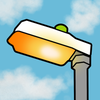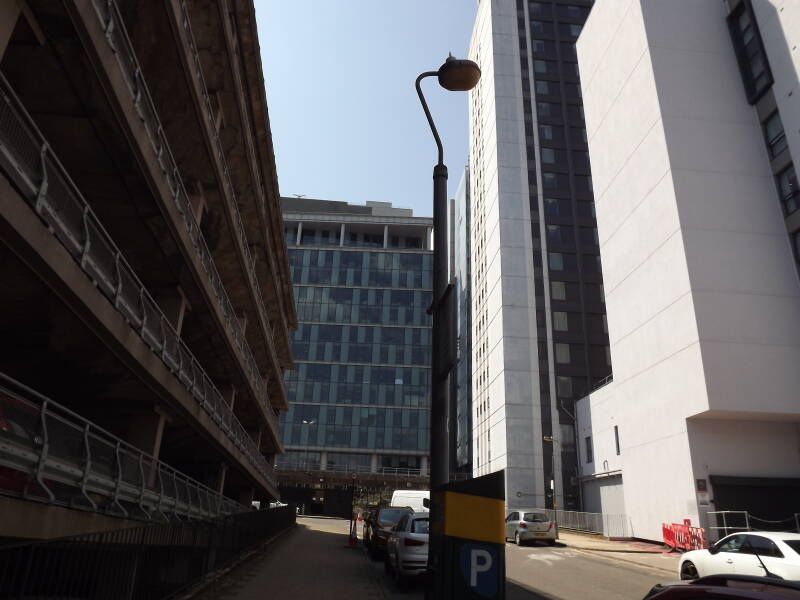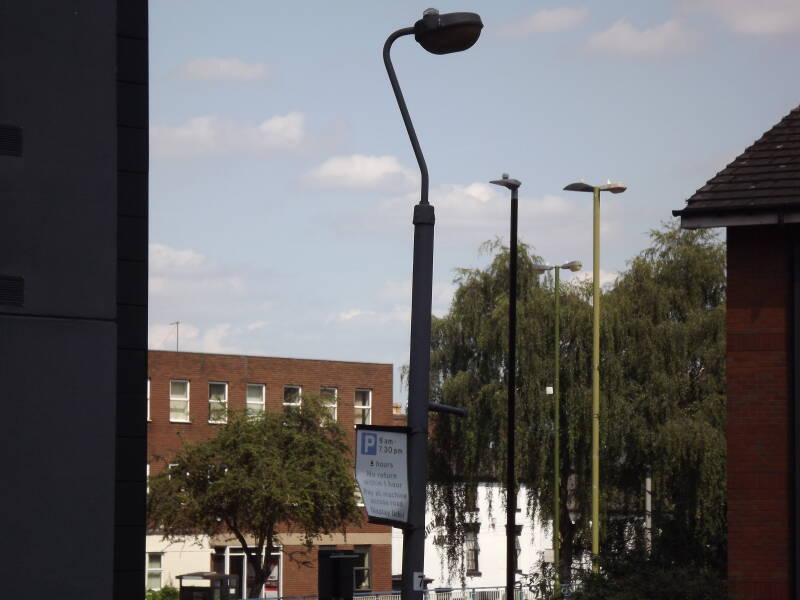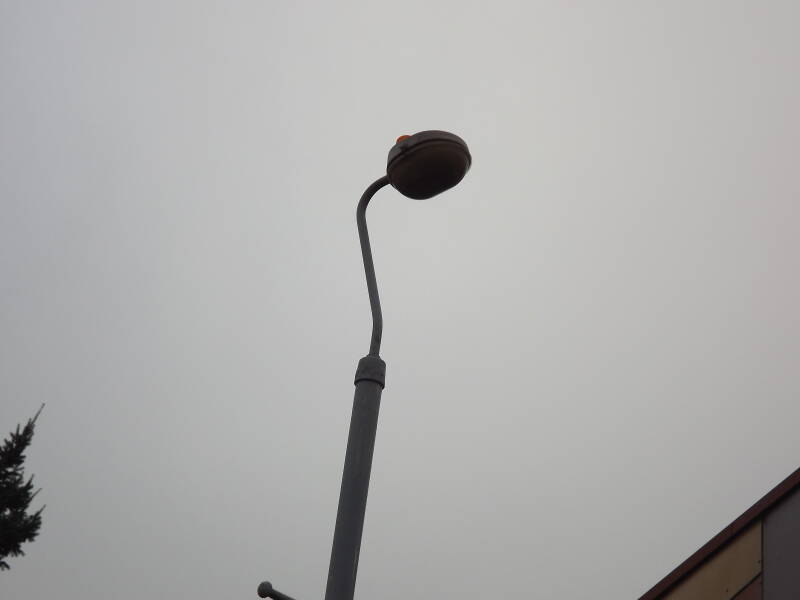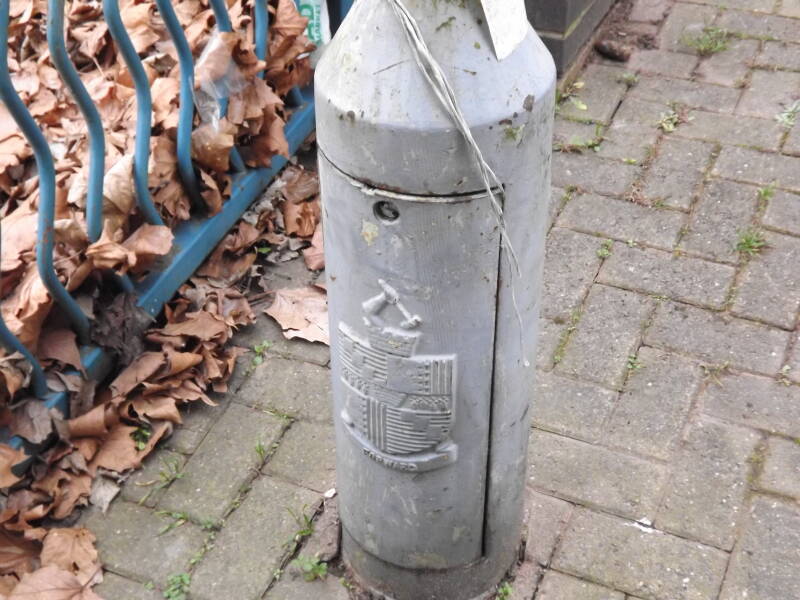REVO Diadem Lantern Installations
REVO Diadems are perhaps my favourite mercury vapour lantern. Their small size and distinctive angled shape means they used to fit-in quite well in rural and suburban areas. A larger version was also produced called the Diadem Major, which (unlike the smaller version) featured an integral gear. The rough age of a Diadem can be determined by looking at the bowl. A glass bowl -identifiable by a bowl-ring- points to the 1960s whereas a polycarbonate bowl -identifiable by the almost-certain horrendous yellowing- was featured from the 1970s onwards.
Birmingham
REVO Diadems can be spotted throughout nearby Birmingham, too. This 1970s one is located on Newton Street. A radio node cell can be seen poking out on-top of the lantern. Interestingly, this example runs 70W SON.
It is still on it's original Birmingham City column. Some of them have since-been switched over to newer columns.
Weaman Street has two 1970s REVO Diadems (columns 6 and 7). 6 was pictured first:
This one, too, is on it's original column.
Column 7:
This is the only example not controlled by a radio node cell, still using a Zodion photocell.
This day-burning 80W MBF/U example was spotted on Attenborough Close, column 1.

It highlights the bowl's structure, and the refractor patterns inside.
This next example was spotted with a hanging bowl and a missing door, which provided some needed information about the Birmingham Diadems. It's located on a footpath off Bridge Street West.
The bowl has been like this since 2020, so I'm surprised it hasn't been vandalised yet.
As it turns out, most (or maybe all) of the Birmingham Diadems are the Simplex variety. Inside is the 80W Venture MBF/U lamp. The NEMA socket looks like a newer-addition and not original to the lantern.
It also has it's original 1970s MA 80 S ballast!
Outside of Ali Fish Bar (not far from the last example) are two more Simplex Diadem lanterns, and one GEC Z8896.
The first example's bowl has fallen loose! It hangs on with the clip but just barely.
The column's door is also loose, tape has been wrapped around the base to keep the door on, but even that has failed.
The second Simplex Diadem is missing it's bowl completely, likely as a result of vandalism.
An example including a newer-column on Grosvenor Road, pictured just before nightfall:
Tamworth
This poor REVO Diadem that once stood tall and proud at the entrance to a section of Two Gates Industrial Estate, has met it's unfortunate end after being knocked down. It ran an 80W mercury vapour lamp and was remote geared, meaning the gear was in what was left of the column's base. I would have taken the Diadem, but did not have the tools to remove it at the time. It was also opposite McDonalds, a night-time police hot-spot, and I didn't want to risk that!
Returning in May of 2024, this was all that was left of the column (I wonder how many people have tripped over that!):
The supply cable is plainly visible, as are some bowl fragments...
But fear not! I recently discovered this 1960s Diadem, which is in shockingly good shape, I don't notice any bowl fogginess, and the canopy is clean! It's located on a private lane on the A51. This is an amazing find and I am glad to have found it. It was installed pre-2009; you wouldn't believe it looking at it!

